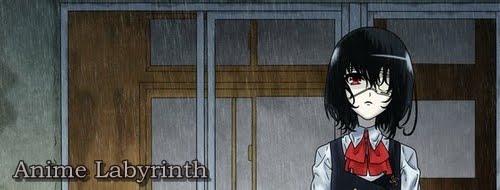
Haruhi Suzumiya (涼宮ハルヒ Suzumiya Haruhi) is the general name for a series of light novels written by Nagaru Tanigawa and illustrated by Noizi Itowhich were subsequently adapted into other media. The story follows the title character Haruhi Suzumiya, a high school girl who can unconsciously change reality, and her strange antics with her school club, the SOS Brigade, which she founded to investigate mysterious events. Haruhi forcibly drafts her cynical classmate Kyon, who narrates the series, and similarly recruits three additional members into her club: the silent bibliophile Yuki Nagato, the shy and timidMikuru Asahina, and the friendly transfer student Itsuki Koizumi. These members soon reveal themselves to Kyon as the extraordinary characters Haruhi is seeking, sent by their various organizations to observe her and hold her reality warping powers in check by maintaining the illusion of a normal life.
The first novel was published in Japan on June 6, 2003 by Kadokawa Shoten with nine individual novels published and a planned tenth as of April 1, 2007. The light novels have been adapted into four separate manga series, a television anime adaptation, two original net animations, an animated film and severalvideo games. After the anime adaptation aired in 2006, publishing company Kadokawa Shoten received various offers for licensing both the novels and their various adaptations.[1][2]
The novels are licensed for English language release in the United States by Little, Brown and Company, for young readers by Yen Press and the anime adaptation was licensed for North American distribution by Kadokawa Pictures USA division which then sublicensed production and distribution to Bandai Entertainment.
MANGA
Kadokawa Shoten published two manga adaptations of the Haruhi Suzumiya light novel series in Shōnen Ace. The first one, by Makoto Mizuno, ran from May to December 2004 and was considerably different from the light novels in its one published volume, having little input from the original author. The second series, illustrated by Gaku Tsugano, started in November 2005 and is still in production, having been published in eight volumes, though with a younger target audience than the original novels. On April 17, 2008 Yen Press announced that they had acquired the license for the North American release of the first four volumes of the second manga series, promising the manga would not be censored.[4]

An official parody four-panel comic strip titled The Melancholy of Haruhi-chan Suzumiya by Puyo started serialization in Shōnen Ace on July 26, 2007 and inThe Sneaker on August 30, 2007. The first bound volume was released on May 26, 2008, the second on December 26, 2008, and the third on July 10, 2009. Yen Press licensed the Haruhi-chan manga series for an English release in North America[5] and released the first volume on October 26, 2010.[6]Another four-panel parody manga, Nyorōn Churuya-san by Eretto (Utsura Uraraka), was originally a dōjinshi starring a smoked cheese-loving, super deformed version of Tsuruya, published in three volumes (released on August 2006, February 2007, and October 2007) before beginning serialization in the magazine Comp Ace in November 2008.[7][8] Another manga, The Vanishing of Nagato Yuki chan (長門有希ちゃんの消失 Nagato Yuki-chan no Shōshitsu), also by Puyo, started serialization in Kadokawa Shoten's Young Ace in July 2009. It is set in the alternate timeline established in the fourth light novel, The Disappearance of Haruhi Suzumiya, where Yuki Nagato is a shy schoolgirl as opposed to an alien.[9]


ANIME
The anime adaptation of The Melancholy of Haruhi Suzumiya (涼宮ハルヒの憂鬱 Suzumiya Haruhi no Yūutsu), produced by the Japanese animation studioKyoto Animation and directed by Tatsuya Ishihara, contained 14 episodes which aired in Japan between April 2 and July 2, 2006. It was originally aired in anonlinear order, with the prologue and first seven chapters of the first novel intermixed with chapters from some of the later novels. The "next episode" previews feature two different episode numberings: one number from Haruhi, who numbers the episodes in chronological order, and one number from Kyon, who numbers them in broadcast order. The DVD releases start with "Episode 00" and are then shown in chronological order. The anime was licensed and distributed by Bandai Entertainment over four DVDs released between May and November 2007. A complete box set was later released on July 29, 2008.

The second season of the anime series was announced in a full-page advertisement of Asahi Shimbun on July 7, 2007 in Japan.[10] Promotional videos included a live action sequence, inspired by the "Bamboo Leaf Rhapsody" chapter from the third novel The Boredom of Haruhi Suzumiya, depicting Haruhi and Kyon breaking into a school with footage taken from surveillance cameras. On December 18, 2007 the anime's official website, haruhi.tv, was replaced by a fake 404 error with five form-input fields, a reference to the pivotal date in The Disappearance of Haruhi Suzumiya, the fourth volume in the light novel series.[11]
A re-broadcast of the first series began in April 2009.[12] Following a comment by Teletama one of the broadcasting stations, that the 2009 broadcast would be 28 episodes long, there was speculation that the re-broadcast would be followed by the second season, though this was not confirmed by Kadokawa at the time.[13][14] The first new episode, "Bamboo Leaf Rhapsody" (笹の葉ラプソディ Sasa no Ha Rapusodi), was aired on May 21, 2009 as the eighth episode of the re-broadcast. The re-broadcast also aired on 7mate in 2011. [15] Unlike the original run the re-broadcast was shown in chronological order, with new episodes intermixed with the old ones. Episodes were later shown on Kadokawa's YouTube channel after the broadcast, and also started showing English-subtitled episodes. Bandai Entertainment licensed the re-broadcast in 2010[16] and released a complete collection in North America on September 14, 2010.[17] Manga Entertainment will release the season in a 4-disc DVD box set, including the Haruhi-chan mini-episodes, in the UK on July 4, 2011.[18]

















